Features of planting verbena in open ground

In the domestic market, it is a real rarity to find seed material of perennial verbena. More often you can find the seeds of the annual verbena, which are not inferior in their beauty. In this article, we will analyze how verbena is planted in open ground, how to plant it with seedlings and seeds, and also find out what nuances the planting has in spring.
Timing
Of course, the exact timing of planting depends on the region. In most cases, the procedures begin in the second or third decade of May, when the earth is sufficiently warmed up, and the weather has more or less settled down.
It is important that there are no obvious frosts in the spring at night. It is ideal if the daytime temperature ranges from 18 to 21 degrees Celsius, and at night it is 14-17. Insignificant deviations have an uncritical effect on plants: they are not capricious at all and take root quickly enough.
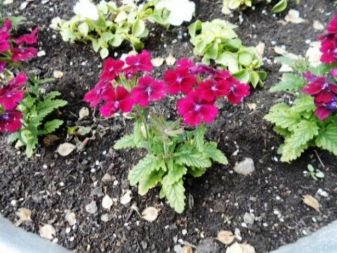
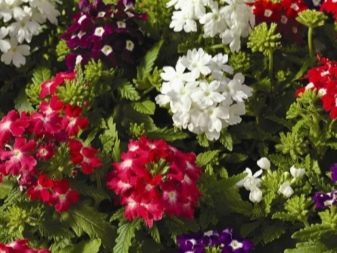
Seat selection
Verbena only grows in sunny places. She calmly refers to slightly shaded areas, but cannot stand the darkness. The place of growth must have deep groundwater. Also, the seedlings will need protection from the wind.
What kind of soil can you plant?
Even if a plant is drought tolerant, this does not mean that it can grow anywhere. It is necessary to adhere to a number of rules for organizing the conditions necessary for the successful cultivation of verbena.
The soil should be loose and well saturated with oxygen. Drainage is also required so that excess moisture does not accumulate in the soil layers. Loamy types with a neutral acidity level are well suited. Additionally, humus and wood ash are introduced into the soil. Experienced gardeners also recommend using complex mineral fertilizing with a small proportion of nitrogen (as it promotes the growth of foliage, not flowers).
Manure is not applied to the soil; humus is used as an alternative. For good drainage, a special "pillow" is created under each bush before planting. Expanded clay is placed in the hole with a layer of 3-5 cm. Instead of expanded clay, small stones and crushed stone are well suited.
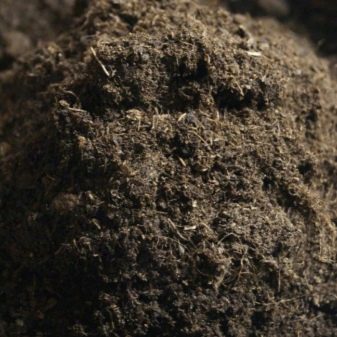
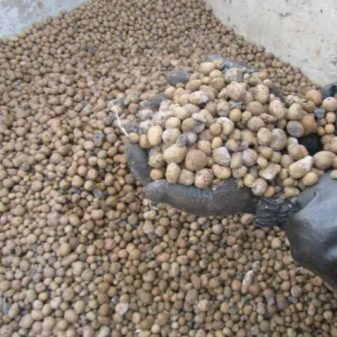
How to plant correctly?
You don't need to be an experienced flower specialist to plant vervain correctly. As mentioned above, it takes root well. Planting verbena is carried out both in open ground and by seedling method. Seeds for the latter method are planted a little earlier than for the first.
Scheme
This item is individual for different types of varieties. Bush flowers should be placed at intervals of 20 cm, ampel flowers are planted at a distance of 30 cm or more. This is done so that the shoots of plants do not interfere with each other, since they are able to create a whole carpet of flowers. Also, this scheme is adhered to for reasons related to the characteristics of the root system.
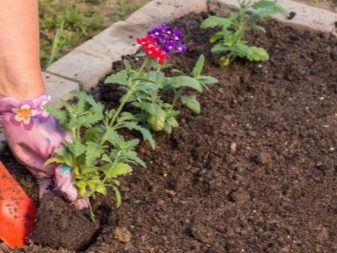
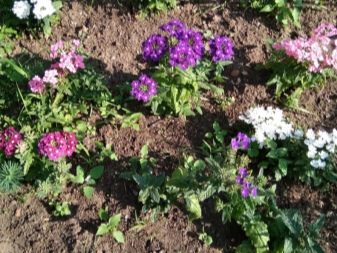
Technology
The technology is partly composed of those nuances that have already been covered. The correct sequence must be followed to achieve healthy and beautiful colors.
Let's analyze the technology step by step.
- A well-lit place is chosen, the shape of the future flower bed is roughly outlined.
- The site is dug up, stones and weeds are removed. The necessary fertilizers and feeding are added.
- The location of the holes is determined, the required distance is measured. On average, the depth of one hole is about 10 cm, taking into account the drainage layer. If you are planting in seedlings, then the depth is determined taking into account the height of the ground level, which was placed in the container.
- A plant (or seed) is placed in a slightly sprinkled with earth and moistened drainage, sprinkled and watered again.
- To reduce the amount of watering, the site is additionally mulched. Use peat, wood chips, humus.
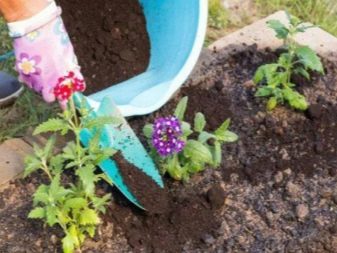
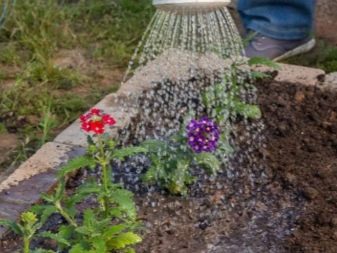
Follow-up care
In general, the plant is unpretentious. It is important to remember that it is better to underfill it than to pour it, since the high level of humidity has a bad effect on the functioning of the vervain root system.
In outdoor growing conditions, only basic care is required. Watering type is moderate. Top dressing is applied 3 or 4 times per season. Gardeners recommend resorting to the use of mineral fertilizers if you want to preserve the decorative image of the plant a little longer and extend the overall flowering period.
Loosening is used when there is no mulching on the site. It is necessary to maintain a normal balance of air supply to the upper and lower parts of the verbena bush. The crust of earth that forms over time interferes with this process. They take oxygen from the verbena and the resulting weeds.
In terms of pinching with verbena, everything is ambiguous. There are a number of varieties that do not need a procedure at all and build slender compositions on their own. These include, for example, the Quartz verbena. Withered lashes are cut off in order to preserve lush flowering.
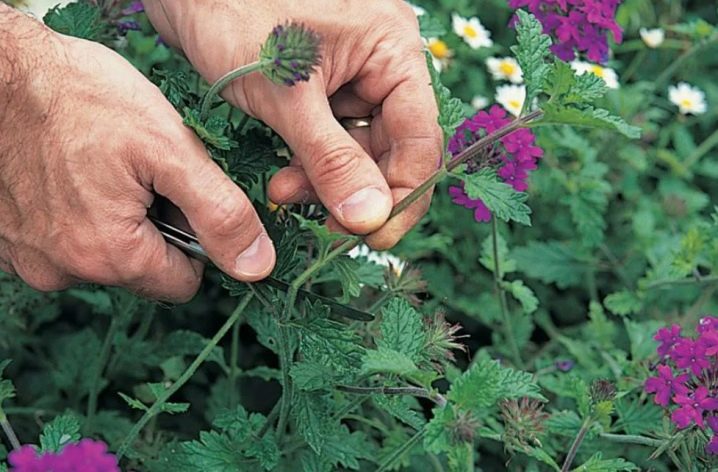
Pinching is often used in the case of growing hybrids. This is done in the area of 3-4 leaves, the process is necessary to stimulate the growth of lateral shoots of the plant, which leads to a greater splendor of the bush and an increase in the number of flowers in general. If the flower grows with whips, they can be attached to the ground with a hairpin and hilling. Verbena is an amazing flower, because after that the plant gives roots in a designated place, which allows you to make several from one flowering bush.
Ampel verbena is considered a universal species. Thanks to the possibility of rooting long lashes from the plant, it is easy to make a carpet. The plant looks just as noble in pots or flowerpots. If you choose a pots for verbena, then small, but preferably wide containers are suitable for you, since the roots are often located not in depth, but over the area of the land.
It is important that a drainage layer is also present. The accumulation of water in a planter without bottom holes contributes to the early death of the plant.
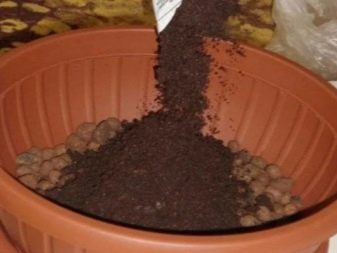
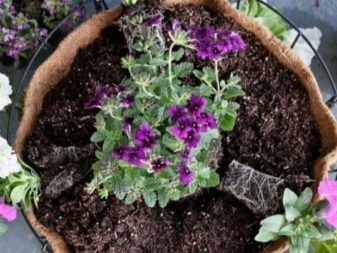
Light and nutritious soils with a neutral acidity level are suitable for pots. People often resort to buying a ready-made substrate for flowering plant species. It can be easily mixed independently: sand, garden soil and peat act in a ratio of 0.5: 1: 2. Additionally, wood ash and fertilizers are added. Verbena is planted alone on a pots. Several varieties can be placed in flowerpots.
Many landscape designers combine erect flower types such as geranium, fuchsia, or begonia with a hanging or creeping carpet of verbena. Ampel compositions only from verbena varieties are able to attract general attention with the same brilliant success. Flowers placed in flowerpots grow well and have good splendor. Most varieties are unpretentious and tolerate drought easily. Flowers are able to withstand the first frost and bloom for a relatively long time.

Diseases and pests
The current varieties, thanks to the great and long work of breeders, are distinguished by good immunity to many diseases and pests. However, vervain is still afraid of some ailments, we will analyze them in more detail.
- Powdery mildew. Appears in the form of white spots on different parts of the plant. The growing spots increase, acquire a purple hue, and the leaves and shoots die off and fall off in the process. The affected areas should be removed and burned, the rest should be treated with a fungicide solution (the preparations Fundazol, Chistotsvet, Strobi, Raek are suitable). Gardeners recommend either alternating them or turning to folk remedies, which is considered a more environmentally friendly and affordable option.
- Root rot. Occurs due to excessively moist soil. It is recognized by the blackening of the stem of the trunk in the area of the ground. Often, after such an ailment, the plant dies off and is removed. The surviving mustache is left after being treated with Fitosporin, Baikal EM-1 or others.
- Aphid. It is easily detected and quite simply treated with folk remedies. Suitable chemical and biological preparations - "Actellik", "Inta-Vir", "Agravertin" and others.
- Spider mite. Difficult to detect and multiply rapidly. On the plant, you can see yellow dots (bite sites), then the leaves turn yellow and fall off, under the foliage there are either the pests themselves or a white web. Suitable chemical and biological preparations - "Akarin", "Bitoxibacillin", "Fitoverm".
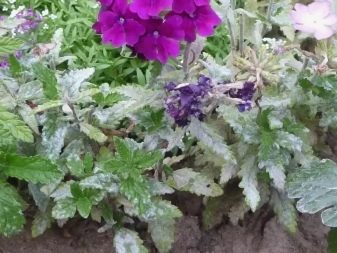
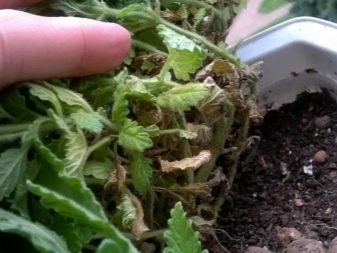







































































































The comment was sent successfully.